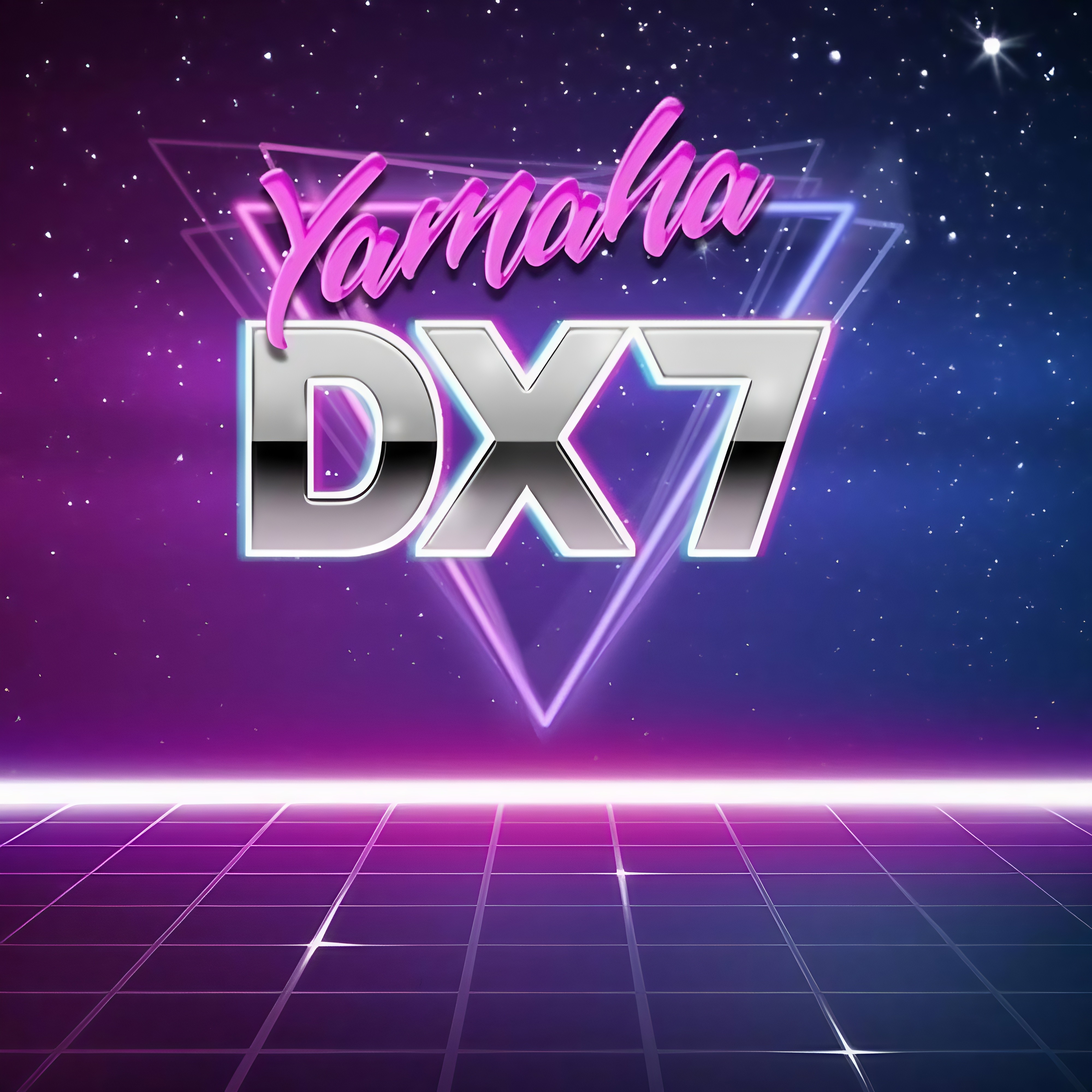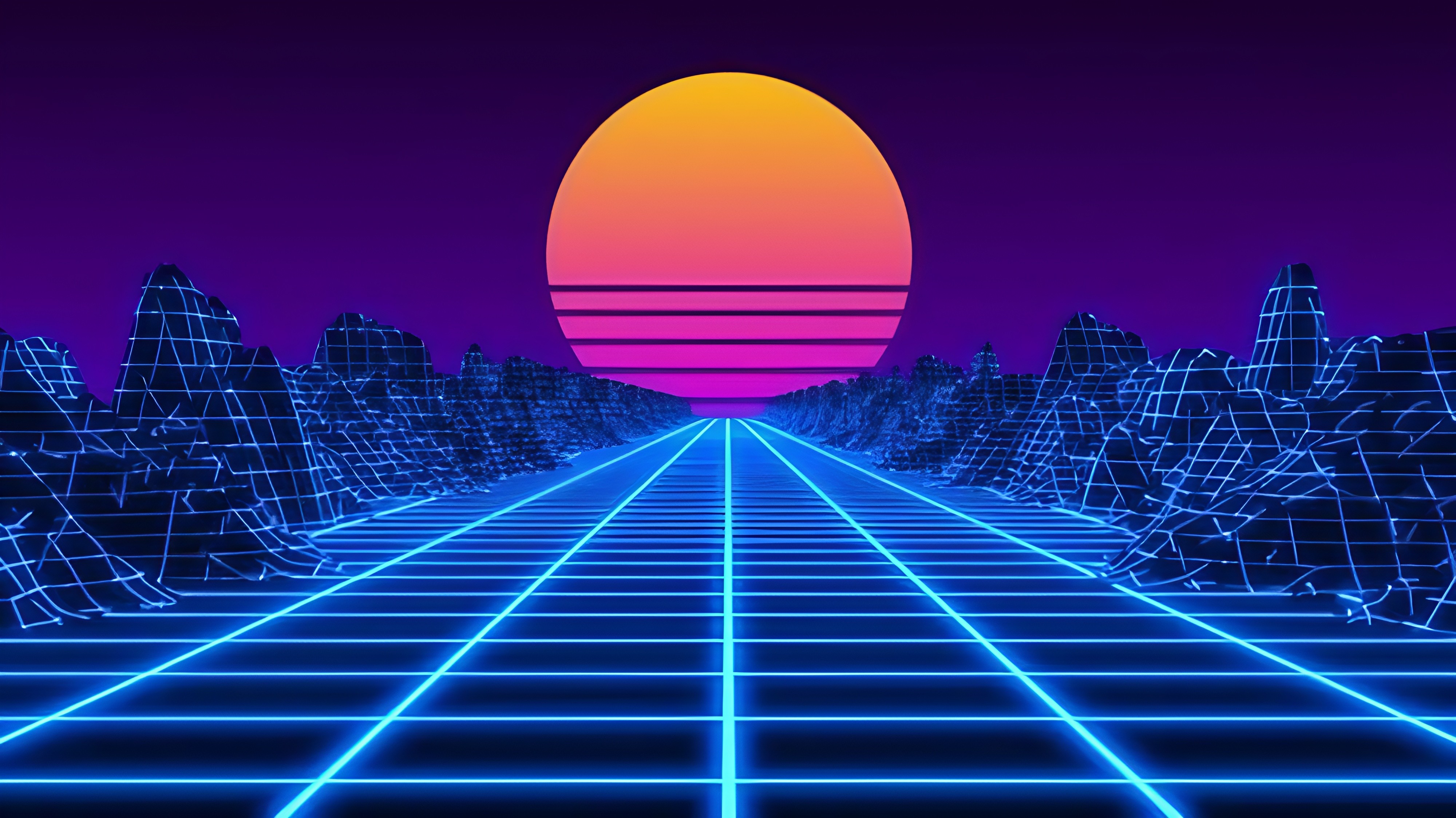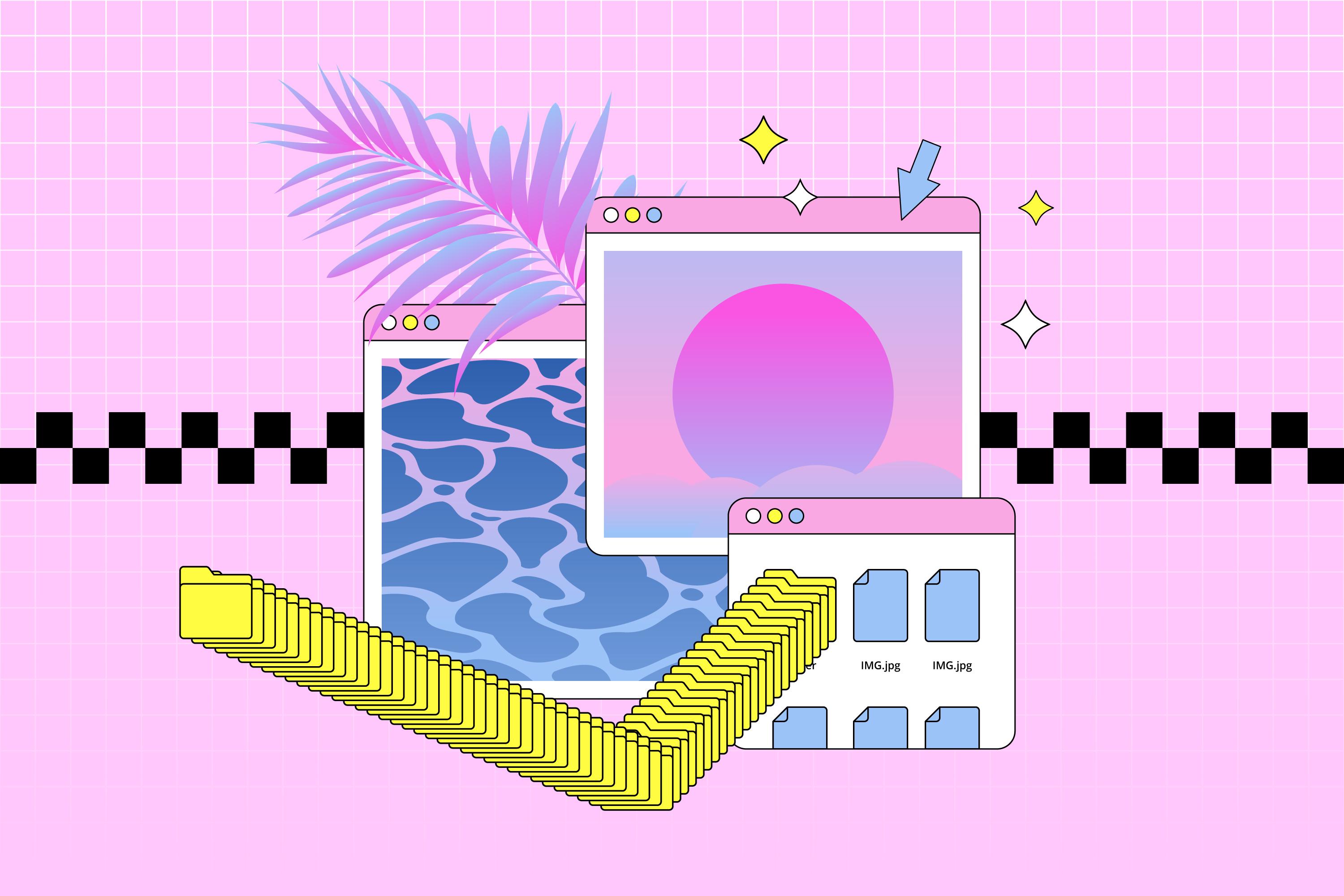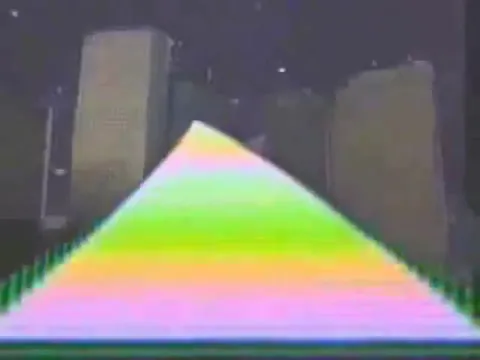
Genres
Jun 26, 2025

So, you're ready to conjure the hazy, reverb-drenched soundscapes of vaporwave? It's a journey into a unique sonic world, a digital seance with the ghosts of pop culture past. Making truly compelling vaporwave is more than just grabbing a forgotten 80s pop track and slamming on the tempo brakes (though that’s a big part of the fun). It’s a creative exploration, blending a delicious sense of nostalgia with surprisingly futuristic sonic manipulation. If you want to build entire worlds from shimmering synths and endless echoes, you're in the right place. This isn't just a guide; it's your initiation into the art of sonic time travel.
The vaporwave aesthetic is built on a delicate-yet-subversive foundation. It’s about re-contextualizing sounds and visuals, giving pop culture a playful, ironic nudge, and rediscovering musical gems someone left in a cultural attic decades ago. Today’s producers are digital wizards, blending powerful software with the sought-after warmth of analog gear to cook up something timeless yet totally fresh. Whether your muse is the ghostly glow of early internet forums, the muted tones of retro arcade games, or the strangely comforting sound of 1980s corporate elevator music, learning how to make vaporwave is a rewarding challenge. It requires sharp technical ears and an artist's heart.
This guide is packed with detailed, experience-driven advice to show you how to turn your vaporwave ideas into professional-level productions. We’ll walk you through selecting the right software, understanding the soul of classic synths, layering those iconic hazy atmospheres, and polishing your tracks until they gleam with retro-futuristic light. Let's make some art.
Must-Have Gear for That Vaporwave Sheen
The soul of vaporwave production is capturing wistful, bygone sounds within the modern digital realm. Think of your studio setup as your nostalgia-crafting toolkit. The right software, classic-sounding synthesizers (or their digital doppelgangers), powerful sampling tools, a MIDI controller, and a quality audio interface are your essential building blocks. Getting a handle on this gear is the first step to recreating the Lo-Fi warmth and dreamy vibe that defines the genre.
Choosing Your Digital Audio Workstation (DAW): Your Sound Lab
Your Digital Audio Workstation (DAW) is mission control for your entire creative process. For vaporwave, you need software that lets you twist, chop, stretch, and arrange audio with near-infinite flexibility. Leading choices like Ableton Live, FL Studio, and Logic Pro are popular for a reason.
Ableton Live: Often hailed as the king for sample-based genres, Ableton's workflow is a paradise for experimentation. Its built-in audio effects, particularly the "Warp" algorithms for stretching audio and the powerful "Simpler" instrument, feel tailor-made for vaporwave production.
FL Studio: A favorite for its lightning-fast workflow and legendary step-sequencer, FL Studio is another fantastic option. Its Piano Roll is considered one of the best in the business for programming intricate melodies and chords.
Logic Pro: For Mac users, Logic Pro offers an incredible value with a massive library of high-quality stock plugins and virtual instruments right out of the box.
When choosing, look for a DAW that’s a beast at sample manipulation and has an interface that sparks your creativity. A big plus is the ability to use plugins that mimic vintage gear. A plugin for tape saturation or vinyl crackle can instantly add essential retro credibility.

Vintage Synths: The Sound of Yesterday, Today
Actual vintage hardware synthesizers are the holy grail for many electronic musicians, possessing a warmth and instability that digital synths try to replicate. If you can get your hands on a Roland Juno-106 or a Yamaha DX7, you’ll unlock sound palettes that have defined decades of music. These are the sources of those iconic atmospheric pads, glassy bells, and slightly unsettling lead sounds.
However, you don't need expensive hardware. Many software synths (VSTs) do an incredible job of emulating these classics. Look into popular options like the Arturia V Collection for a comprehensive suite, TAL-U-NO-LX for the iconic Roland Juno sound, or the free plugin Dexed for classic Yamaha DX7 tones. The trick isn't just having the tool; it's understanding how to tweak those digital knobs—adjusting oscillator detune, filter envelopes, and LFO modulation—to get the dreamy, imperfect textures you're after.
Essential Tools: Samplers, Controllers, and Interfaces
Sampling Tools: Sampling is where vaporwave truly finds its voice. Grabbing snippets of 80s pop, forgotten R&B, or smooth jazz provides the nostalgic DNA of your track. Your DAW’s built-in samplers (like Ableton’s Simpler) are perfect for slicing, dicing, and rearranging old recordings in brilliantly creative ways.
MIDI Controllers: These are your hands-on, physical connection to the digital world. A simple MIDI keyboard lets you play in melodies and chords far more expressively than clicking with a mouse. Faders and knobs allow you to "perform" your mix, automating filter sweeps and effects for a more dynamic and organic feel.
Audio Interfaces: An audio interface is the high-quality translator between your analog gear (if you have any) and your computer. It ensures your sounds are captured clearly and played back without annoying delays (latency), which is vital for real-time tweaking and recording.
Developing Your Signature Vaporwave Sound
Got the gear? Excellent. Now for the truly creative part: developing a sound that’s uniquely yours. This means getting clever with specific production techniques to turn standard audio into something ethereal, immersive, and dripping with nostalgia.
Layering Ambient Sounds: Build That Dreamscape
Ambient layers are the atmospheric clouds your vaporwave track floats on. Think of yourself as a sound painter. Start with a foundation, perhaps some low, rumbly synth pads or a slowed-down recording of rain. Then, gently add higher-frequency textures—a soft, filtered piano loop, distant city sounds, or the hum of a CRT monitor. Each layer should support the others, creating a rich audio tapestry.
Long reverbs, spacious delays, and a touch of stereo chorus can help blend these layers together seamlessly. Use your EQ wisely to carve out space for each element, preventing your soundscape from turning into a muddy mess. The goal is a sound that feels huge, slightly melancholic, and deeply inviting.
Pitch Shifting and Tempo Manipulation: Warping Reality
Pitch and tempo manipulation are your primary tools for recontextualizing sound. This is where you take the familiar and make it beautifully strange.
Slow It Down: Most vaporwave hangs out in the 60-80 BPM (beats per minute) range. This super-chilled tempo is the key to that laid-back, reflective vibe. Slowing down samples also does wonderful things to their texture, creating grainy artifacts and smearing the transients.
Pitch Down for Mood: Nudge a sample's pitch down, and a happy tune can become an eerie, otherworldly moan—a classic vaporwave sound. This technique can instantly inject a sense of melancholy or mystery.
Introduce Wobble: Use a slow LFO (Low-Frequency Oscillator) to subtly modulate the fine-tuning of a synth or sample. This creates a slight, continuous pitch wobble that mimics the sound of a warped cassette tape, adding a powerful dose of imperfect nostalgia.
Reverb and Delay: Creating Infinite Space
In vaporwave, reverb and delay aren't just effects; they are the environment. They create the sense of space and the ghostly echoes of time.
Reverb: Your goal is to create vast, surreal spaces. Think of the acoustics of a giant, empty shopping mall at 3 AM. Use "Hall" or "Plate" reverb settings with long decay times (4-8 seconds or more). A great trick is to put a reverb on an auxiliary send track, allowing you to send multiple instruments to the same "space" for a cohesive sound.
Delay: Delay (or echo) creates the hypnotic, trailing repetitions that add rhythm and depth. Use a simple stereo delay timed to the beat of your track (e.g., a 1/4 or 1/8 note delay) on synth leads. Try "ping-pong" delays that bounce between the left and right speakers for a wider stereo image.
Lo-Fi Aesthetics: The Beauty of Imperfection
That slightly fuzzy, worn-out sound is pure vaporwave. It’s the sonic equivalent of finding an old VHS tape of a forgotten memory. You can achieve this with dedicated plugins or clever use of stock tools:
Texture: Lightly layer samples of tape hiss or vinyl crackle underneath your track to instantly create a retro feel.
Saturation: Use tape saturation plugins to add warmth, gentle compression, and harmonic distortion, simulating the sound of recording to analog tape.
Bitcrushing: Subtly use a bit reducer or sample rate reducer to add a digital, grainy texture. This can make a pristine modern synth sound like it came from an early-90s video game console.
EQ Filtering: Use an equalizer to mimic the frequency response of old playback systems. Cut some of the deep sub-bass (below 40Hz) and the very high treble (above 12kHz) to give your whole mix a more contained, vintage sound.

Sample Selection: Digging for Audio Gold
Choosing the right samples is an art form. You're an audio archaeologist, digging for sounds that instantly spark that nostalgic feeling. Understanding the vibe of different eras and genres is your most important skill.
What Music Genres to Raid for Inspiration?
Vaporwave loves to borrow from 80s and 90s pop, R&B, smooth jazz, library music (production music not intended for general sale), and even cheesy corporate training video soundtracks.
Vintage Pop and R&B: These tracks are goldmines. They often have lush arrangements, soulful vocals (ripe for chopping, pitching, and looping), and iconic synth sounds. Look for clear melodic bits or interesting chord changes.
Smooth Jazz & Fusion: The home of glossy Rhodes pianos and smooth sax solos. This genre is a primary source for the "mallsoft" subgenre aesthetic.
Library Music: Music created for commercials and corporate videos in the 80s and 90s. It’s often incredibly well-produced but emotionally neutral, making it the perfect blank canvas for creating a surreal atmosphere.
Legal Eagles: Sampling Without Getting Sued
This is critically important. While vaporwave's history is steeped in a "Wild West" approach to sampling, for any official release you plan to sell or monetize, you need to be smart about copyright.
The Safe Route: Use samples from public domain archives (like the Internet Archive), material licensed under Creative Commons, or purchase tracks from royalty-free sample pack websites.
The Gray Area: The concept of "transformative use" is often debated. This legal doctrine suggests that if you alter a copyrighted work enough, it may be considered fair use. However, this is a risky defense.
Clearance: The only 100% legal way to sample a commercial track is to get permission (clearance) from both the record label and the publisher, which is often impossible for independent artists.
Being legit with your samples not only protects you legally but also makes you look more professional in the long run.

Crafting Melodies That Stick (Even When They're Hazy)
Even in a genre known for its hazy atmosphere, a strong musical foundation can make your track unforgettable. It's about weaving together interesting chords, evocative textures, and memorable synth lines.
Chord Progressions: Setting the Emotional Mood
Chords are the emotional backbone of your track. Vaporwave often uses complex, jazzy, or slightly unusual chord progressions to create that bittersweet, nostalgic feeling.
Go Beyond the Basics: Instead of simple major and minor triads, explore 7th and 9th chords (like Cmaj7, Am9). These chords have more notes and create a richer, more sophisticated sound often associated with jazz and soul music.
Example Progression: A classic vaporwave-style progression might look something like this: Dm9 - G13 - Cmaj7 - Fmaj7. This movement feels smooth, slightly melancholic, and endlessly loopable.
Melodic Elements: Hooks, Leads, and Pads
Hooks: A hook is that little bit of melody that gets stuck in your head. In vaporwave, this can come from a processed vocal sample or an original synth line that sounds like a forgotten 80s pop hit.
Synth Leads: A classic vaporwave lead is often processed with heavy chorus, delay, or a phaser to get that shimmering, watery tone. Experiment with your synth's settings to design unique sounds that can cut through the atmospheric haze.
Lush Background Pads: Pads are the atmospheric foundation. These are the slow, evolving synth sounds that create a continuous wash of harmony. The key is subtle movement; use slow attack and release times on your envelopes and gentle filter sweeps to keep them from sounding static.
Getting Your Vaporwave Heard: Promotion in the Digital Age
You've painstakingly crafted an awesome track. Now what? You need to get it out into the world. In the digital age, building an online presence and connecting with the right communities is just as important as your production skills.
Build Your Aesthetic on Social Media: Platforms like Instagram and TikTok are your best friends for showcasing your music and visual aesthetic. Create a consistent visual style that screams vaporwave—think Roman busts, pastel color palettes, glitch art, and retro-futuristic imagery.
Master the Streaming Platforms: Get your music on Spotify, Apple Music, and especially SoundCloud and Bandcamp. Bandcamp is the de facto home for the vaporwave community, allowing for pay-what-you-want pricing and a direct connection with fans. Good metadata and tags (#vaporwave, #mallsoft, #futurefunk) are crucial for discovery.
Engage with Vaporwave Communities: Find your people on Reddit (r/vaporwave), Discord servers, and other forums. Share your work, give thoughtful feedback on others' tracks, and be an active part of the conversation.
Don't Underestimate Cover Art: Your track's cover art is the first thing people see. It must be eye-catching and true to the vaporwave aesthetic, setting a strong mood that matches your music.
Collaborate: Team up with other producers or visual artists. It’s a fantastic way to cross-promote and create something new and exciting that neither of you could have made alone.
Frequently Asked Questions (The Vapor-FAQ)
Q: What really sets vaporwave apart from other electronic music genres? A: Vaporwave is defined by its distinct nostalgic and critical aesthetic. It heavily relies on sampling and manipulating audio from the 80s and 90s, using techniques like slowing tracks down and drenching them in reverb to create a dreamy, surreal, and often melancholic atmosphere. It’s the soundtrack to a dream you vaguely remember from 1989.
Q: Is Ableton Live the only good DAW for vaporwave? A: While Ableton Live is hugely popular for its powerful sampling tools, you can absolutely make incredible vaporwave in FL Studio, Logic Pro, or any other capable DAW. It's far more about how you use the tools than which specific brand you choose.
Q: How do I sample music without getting into legal hot water? A: The safest routes are to use samples from public domain archives, material with a Creative Commons license, or royalty-free sample packs. For unofficial, non-monetized releases, many artists operate in a legal gray area, but it's always a risk.
Q: What's the difference between Vaporwave and Synthwave? A: While both are retro-inspired, they have different moods. Synthwave is generally more energetic and cinematic, drawing from 80s movie soundtracks. Vaporwave is more ambient and surreal, often with a slower tempo and a focus on jazz and pop samples to create a more introspective feeling.
Q: How vital is mixing and mastering for a professional vaporwave sound? A: Super vital. Mixing transforms your collection of sounds into a coherent, polished track. Good mixing ensures every element has its own space and the track sounds good on all systems. It’s the difference between a cool experiment and a finished piece of art.
The Digital Ocean Awaits
Making vaporwave music is a fascinating paradox—it's about looking backward to push sound forward. It's an art form that takes the familiar and twists it into something new, uncanny, and strangely moving. By getting comfortable with your gear, mastering these unique production techniques, and developing a curator’s ear for samples, you can create a sound that’s all your own.
You've just been initiated into the hazy art of vaporwave. You now hold the keys to sonic time travel. The digital ocean awaits your contribution. It's time to take these methods, embrace the lo-fi aesthetic, and start building the immersive soundscapes you've always imagined.
Crafting that perfectly imperfect vibe requires a deep understanding of your tools. At Futureproof Music School, we equip you with the fundamental production skills—mastering your DAW, advanced synthesis, and creative sampling—that give you the freedom to bring any aesthetic vision to life, especially one as unique as vaporwave.
Ready to transform these techniques into mastery and create your own hazy, retro-futuristic masterpieces? Join Futureproof Music School today and get a 7-day free trial.








